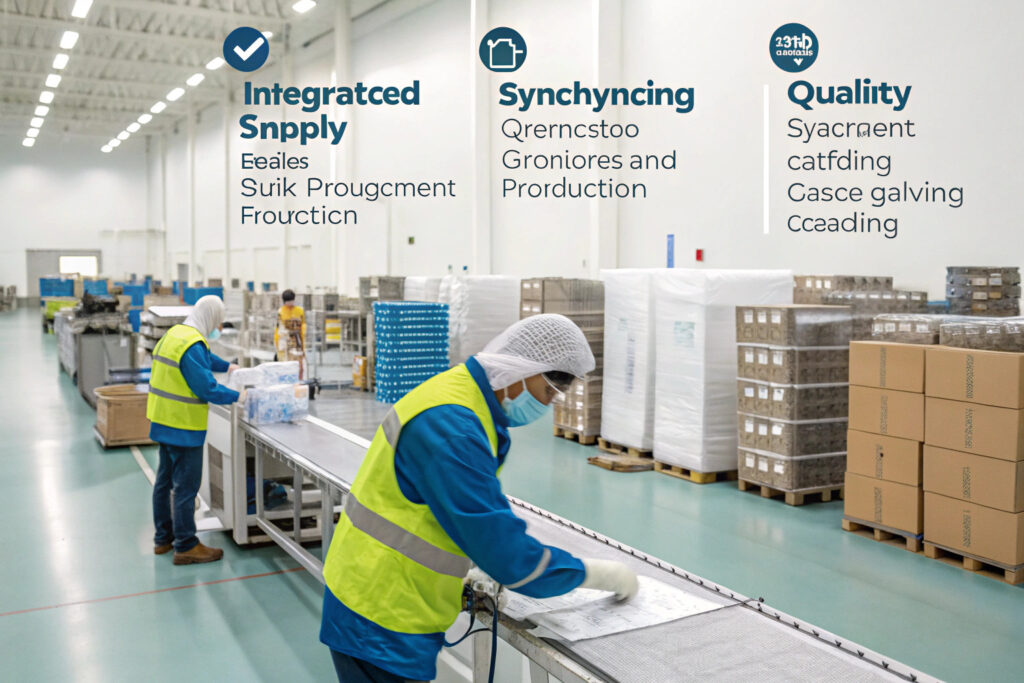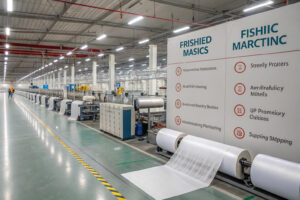The global demand for bulk fabric mask orders remains resilient post-pandemic, especially in fashion, retail, and accessories. But one critical factor buyers often struggle with is lead time. If you're sourcing from China, like most U.S. or EU buyers do, even a few days of delay can cause a serious supply chain domino effect—missed sales windows, overstocking issues, and angry customers.
Integrated supply chain operations significantly reduce lead times for bulk fabric mask orders by synchronizing procurement, production, and logistics in real-time. This removes bottlenecks, minimizes communication delays, and ensures speed-to-market for global buyers.
Our fabric mask manufacturing operations in Keqiao, Zhejiang have been designed from the ground up to serve as a model of end-to-end supply chain integration. In this article, I’ll share exactly how our system works, the benefits it brings to clients like Ron from the U.S., and what you should look for in your next supplier to avoid the classic trap of fragmented sourcing.
What Is Supply Chain Integration in Mask Manufacturing?
Supply chain fragmentation used to be normal—source fabric in one place, cut and sew in another, and ship from yet another city. This model is slow, unpredictable, and costly.
Supply chain integration is the practice of consolidating all critical stages of mask production—from material sourcing to shipment—within a unified ecosystem, resulting in shorter, more predictable lead times.
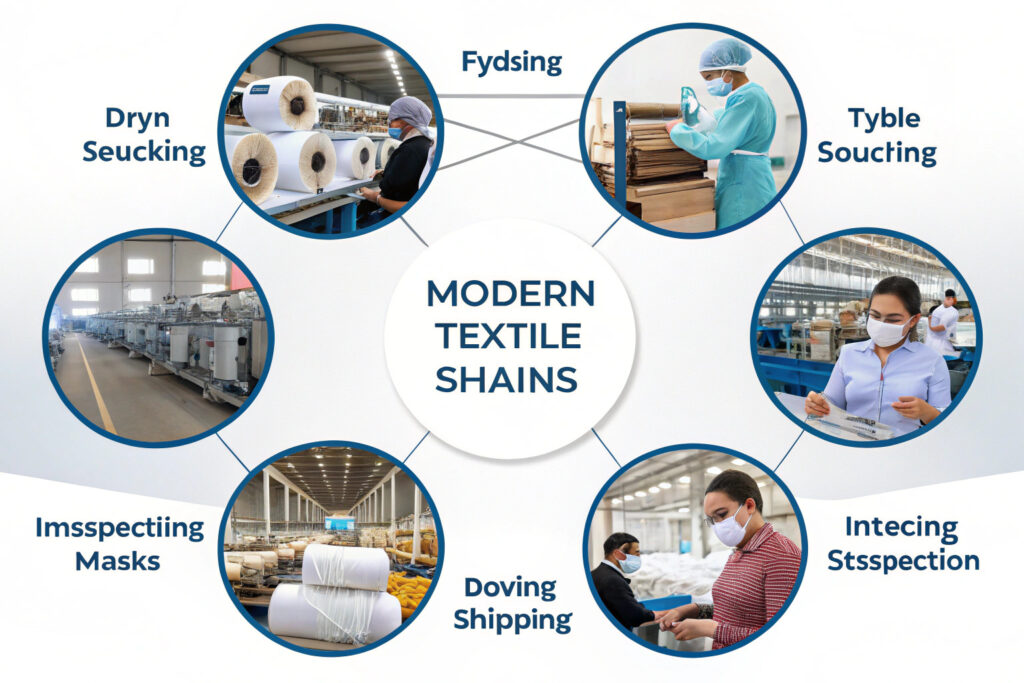 pg)
pg)
Why Does Fragmentation Cause Delays?
When different production stages are handled by separate vendors, handoffs between them create time lags. For example, a delay in fabric dyeing can halt the entire sewing schedule. Moreover, quality checks are duplicated or skipped, leading to rework, miscommunication, and timeline extensions.
Platforms like Supply Chain Brain have analyzed this extensively and show how even a single-day delay in raw material inspection can cost weeks in seasonal delivery windows.
How Is Integration Done in China’s Fabric Mask Cluster?
In Keqiao, we operate within China’s largest textile & mask ecosystem. Our integration includes fabric mills, dye houses, R&D centers, packaging suppliers, and freight forwarders within a 10 km radius. Through live QR-coded batch tracking and centralized communication, we eliminate idle waiting time between stages. This ecosystem approach has been praised by Fibre2Fashion as one of the most efficient clusters globally.
How Does Integrated Sourcing Accelerate Sample Development?
Sampling is usually where time gets wasted—endless revisions, courier delays, and back-and-forth fabric approvals.
Integrated sourcing enables sampling in as little as 5–7 days by consolidating fabric selection, pattern development, and lab dips within the same facility or partner network.
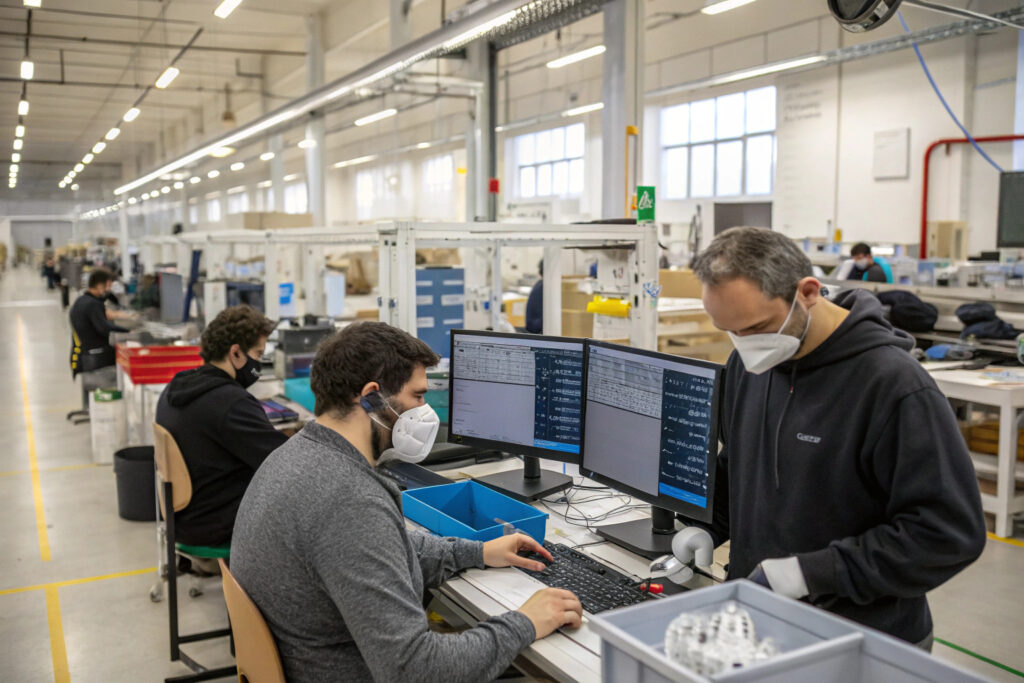
What Makes Fast Sampling Possible?
We’ve established partnerships with local dyeing and finishing units where our design team can physically walk over to review lab dips and approve prints. AI-driven trend analysis further accelerates new pattern creation, helping clients like Ron stay ahead of seasonality. With all data stored in a shared tech pack system, changes are instantly reflected throughout the team.
Can Integration Help With Urgent Re-Sampling?
Yes. If your initial sample fails testing or buyer feedback demands adjustments, you don’t have to start over. Our system tags the sample with a QR code connected to its original pattern, color code, and material batch. Adjustments are logged digitally and acted upon immediately by the team handling the same order line—no need to explain specs from scratch or wait for files to transfer.
We’ve even integrated with platforms like Pantone Connect to ensure color approvals are real-time and on-point.
How Do Integrated Operations Improve Bulk Production Speed?
Bulk production delays are common when subcontractors are involved. But when your supplier integrates everything in-house or within a tightly managed network, speed becomes a major advantage.
Integrated mask production allows simultaneous cutting, sewing, QC, and packing workflows, shaving days—sometimes weeks—off standard timelines.
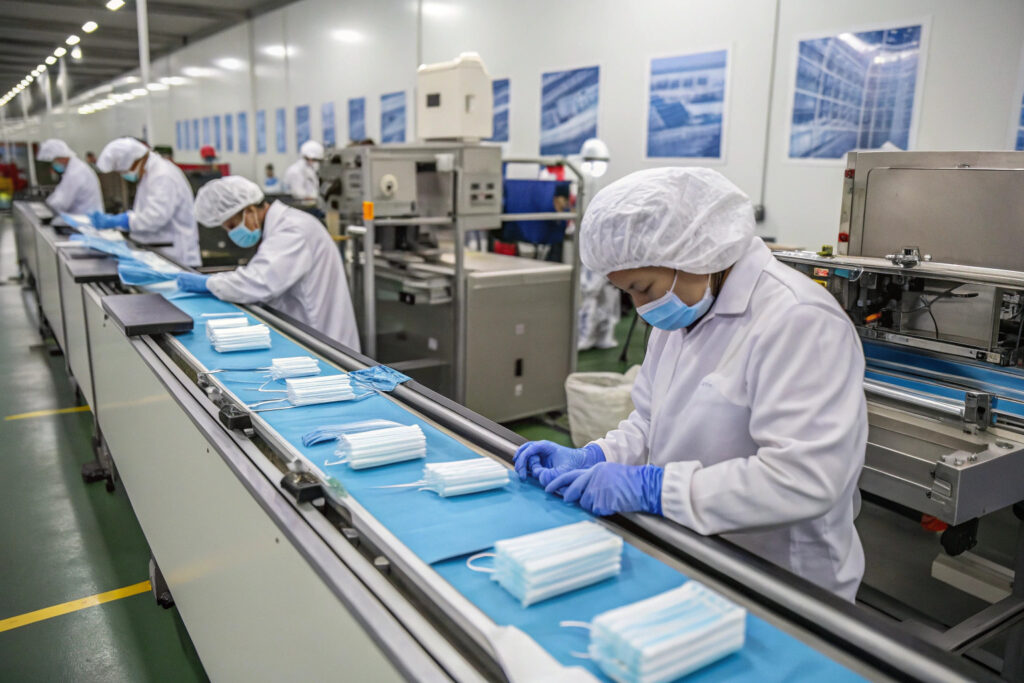
Why Does Coordination Matter in Bulk Output?
In our facility, fabric is cut while the previous batch is still being stitched. QC teams work on rolling inspection, so defects are caught on the fly—not after the batch is packed. Automated systems generate reports every two hours, ensuring line managers can intervene proactively.
We follow lean principles aligned with Just-In-Time production, minimizing WIP (work-in-progress) inventory. Platforms like Lean.org advocate this as best practice in textile manufacturing.
What’s the Impact on MOQ and Timeliness?
Because everything runs like a synchronized loop, we can support both low MOQ orders and large-scale runs. For example, a 50,000-unit order of 3-layer contour masks can be ready to ship within 12 days after sample approval. If you’re running seasonal campaigns or Amazon drops, this agility can be a game-changer.
How Does Logistics Integration Reduce Shipping Delays?
Even if you get everything else right—design, sampling, production—a shipping delay can still ruin your order. That’s why integrated logistics is critical.
Logistics integration ensures smoother customs clearance, warehouse coordination, and optimized sailing schedules by partnering directly with forwarders and port agents.
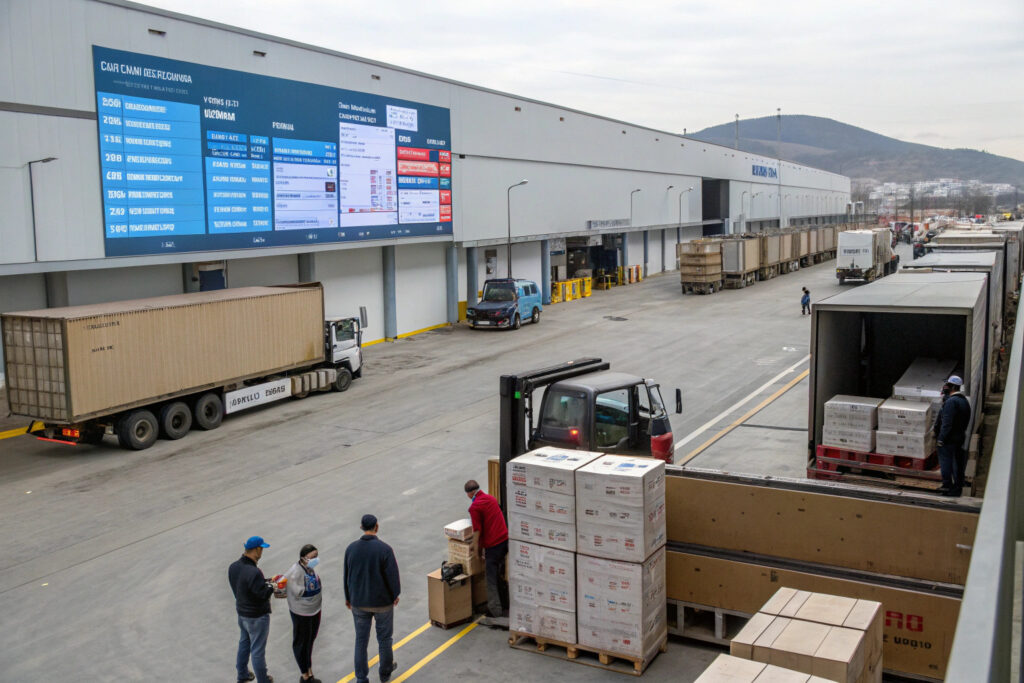
What Role Does Digital Tracking Play?
Every order we handle gets a unique QR-based tracking ID linked to freight forwarder portals like Maersk Flow or Cainiao. Clients can see real-time updates on customs status, port arrival, and even container loading times. This reduces anxiety and improves planning for restocking.
What About Tariffs and Freight Delays?
Through the “Silk Road Keqiao” initiative, we now operate bonded warehouses and inland ports that fast-track exports to Belt & Road countries, the EU, and the U.S. Our freight partners pre-book sailing slots and optimize container grouping for speed.
We also offer DDP shipping options, where we take care of duties, compliance paperwork, and delivery to your doorstep. This is especially useful for U.S. buyers concerned about recent de minimis threshold changes and unpredictable tariffs.
Conclusion
When supply chains are fragmented, your lead time suffers. When they're integrated, everything clicks into place—from fabric sourcing and rapid sampling to bulk output and logistics. That’s what makes our Keqiao-based fabric mask production line truly competitive in global markets.
If you're looking for a reliable partner who doesn't just supply fabric masks—but co-engineers speed, quality, and stability with you—then you're in the right place.
To explore how we can support your brand or sourcing company with fast, scalable, and integrated fabric mask production, please contact our Business Director Elaine at elaine@fumaoclothing.com.

